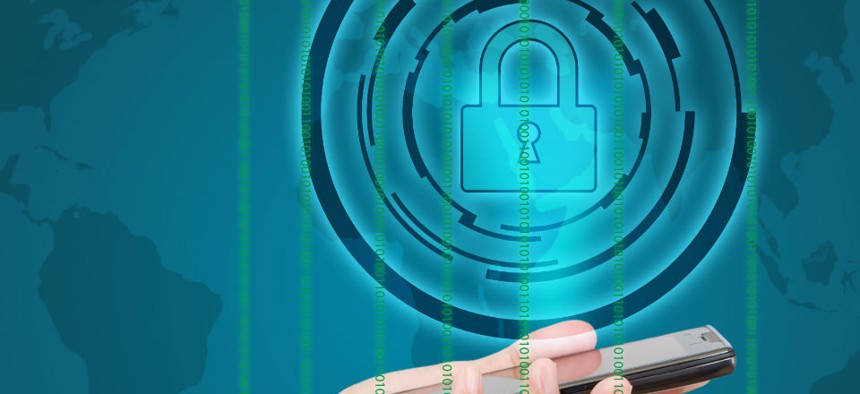Navy and DISA Test Over-the-Air CAC Activation of Smartphones

Anan Chincho/Shutterstock.com
Proving you are who you say you are on a Droid.
The Navy and Defense Information Systems Agency have begun testing software that transmits employees' credentials to popular brand smartphones to verify they are military members, according to a U.S. Marine Corps communications chief.
This transaction could cost-effectively solve a major hang-up in equipping the national security workforce with commercial mobile devices: proving you are who you say you are on a Droid.
So-called Common Access Cards, which troops use to verify they are who they say they are on PCs, do not fit into most smartphones. Card readers are available, yet they can be cumbersome in tactical settings and pricy.
But what if a first responder, before going outside, swiped that identification card on a laptop to send the device a self-destructing “derived” certificate? That's an approach the Space and Naval Warfare Systems Command and DISA are prototyping for service members today.
DISA currently is funding the initiative and has hired a SPAWAR engineering team to develop the software, Rob Anderson, chief of the vision and strategy division at USMC Command, Control, Communications and Computers, told Nextgov.
He would not disclose the cost of the program or the draft timeline. But this is not a multiyear venture. "The SPAWAR team already has a solution that’s running on their test network," Anderson said. "They’ve already got a prototype built."
A hypothetical scenario would involve "registering" a smartphone on a laptop with an ID card, card reader and network password.
The military's existing ID management system then would generate "a onetime over-the-air-like transmission that will allow me to download this derived certificate on to my commercial device," Anderson said at an industry luncheon on Monday. That certificate grants the phone access to government networks for a set period of time. The event was hosted by the Armed Forces Communications and Electronics Association.
This method could work well after a natural disaster.
A Navy worker is assigned, for example, to pump fuel for civilians after Hurricane Katrina knocks out power. The responder needs to consult sensitive maps pinpointing critical infrastructure such as generators. So, before going out, the employee in essence activates the phone online.
"You’re going to pump for Katrina; you’re going to get on to your personal laptop with a CAC reader, and you’re going to surf to this website and essentially register the phone," Anderson said during an interview. "You would get an email that says 'Go to your phone, plug in this passcode on the phone,' which would then download the certificate into the [mobile] application from the certificate manager. All this is done through encryption."
This type of login process would piggyback off military systems that have been in use for a long time.
"You put something on top of the infrastructure we’ve already spent billions of dollars on," Anderson said. "You don’t need anything new. You just put a piece of software on top of it that resides on top of all the infrastructure that the taxpayers have already paid for."
(Image via Anan Chincho/Shutterstock.com)






